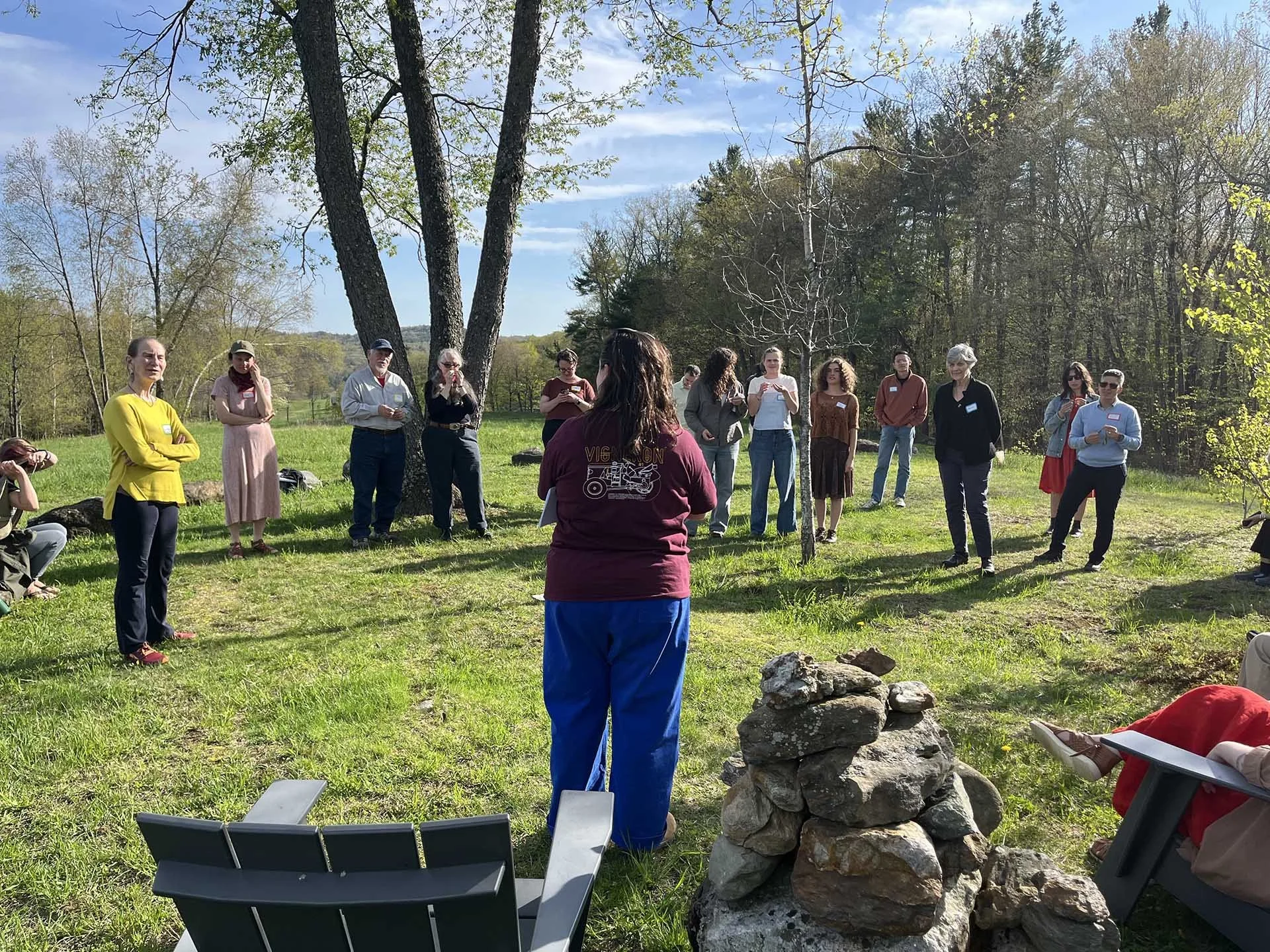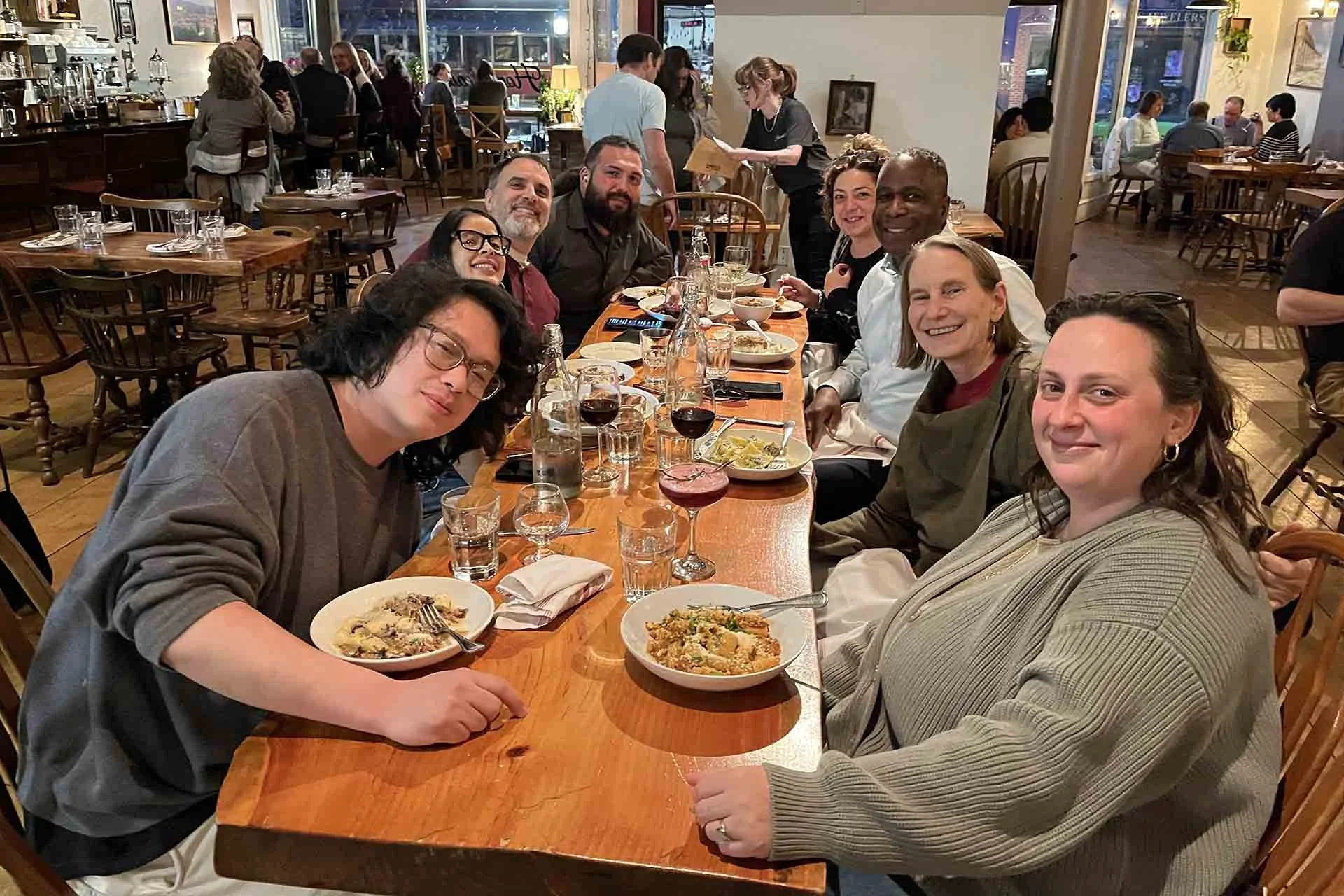
CASE STUDY
MAY DAY CONVENING
Smith College
Honoring Ancestors, Seeding Futures

Challenge
5.5 hours. 60 attendees. 8 presenters. 7+ disciplines. One gathering channeling the spirit of ancestors' dreams.
Historian Jennifer Guglielmo—author of Living the Revolution and co-director of a National Council on Public History Award-winning project mobilizing domestic workers through public history—conceived an ambitious May Day celebration to reconnect contemporary audiences with the radical wisdom of working-class migrant women from the late 19th and early 20th centuries. With support from Smith College, the vision required translating historical scholarship into lived, embodied experience.
How do you sustain 60 attendees across 5.5 hours when traditional academic conferences struggle to maintain engagement beyond brief sessions? How do you integrate visual art, performance, live music, herbalism, poetry, and history into coherent experience rather than parallel presentations? How do you expand from Southern Italian focus to transnational migrant solidarity?

Solutions
Drawing on ValleyCreates experience, I proposed the 'bursts' concept—short 3-5 minute content deliveries interspersed throughout rather than extended consecutive sessions. Rather than Monica Lopez Orozco delivering three performance pieces consecutively, we distributed them as strategic moments throughout the day, creating rhythm alternating between longer and shorter presentations, indoor and outdoor experiences, active and receptive participation.
Integration of breaks was strategic, not logistical: catered lunch plus two coffee/snack intermissions over 5.5 hours. As Italian Americans who've lived these traditions, Jennifer and I understood that breaking bread together isn't peripheral—it's foundational to community.
I recommended two of eight presenters who fundamentally expanded the project's reach. Magdalena Gomez helped transform the event from Southern Italian focus to transnational scope, creating connections between working-class Puerto Rican, Mexican, Black, Indigenous, and Italian migrant women's histories—honoring how these ancestors recognized each other across borders and built solidarity.
Catherine Anraku Hondorp broke the static, seated energy through embodied movement practices that brought participants together. Her dynamic presence and group participation shifted everyone from passive observation to active embodiment—exactly what the ancestors practiced in their mutual aid societies and organizing circles.

When Gabriella Ciancimino arrived from Sicily to create a 6' × 4' × 4' mixed-media installation, the collaboration worked seamlessly because Jennifer, Gabriella, and I had been building this partnership since 2018—creating the trust and shared understanding that enabled ambitious work.
Working alongside Jennifer, I supported Gabriella's stay: discussing her creative needs in advance, sourcing art supplies from my studio and local stores, arranging transportation. I collaborated with Emma Chubb (Smith College Museum of Art Curator) and Jennifer to determine placement and installation methodology for 18 works installed indoors.
The gathering included an artist talk where I contextualized "Portraits of My People" and engaged in public conversation with Gabriella exploring our shared connections to hip-hop culture. Outdoor experiences included the herbalism walk and embodied movement practices, culminating in a final circle that sealed the day.
Results
This event sustained 45+ attendees for the full 5.5 hours, with others flowing in and out according to their schedules—unheard of for academic programming where audiences typically drop after brief initial sessions.
The free, public program drew participants from 7 Smith College departments and centers, three regional institutions (Smith College, University of Massachusetts Amherst, Holyoke Community College), graduate students from Brown University and University of Wisconsin-Madison, and 14 community members including nonprofit leaders, therapists, and educators. This unprecedented cross-sector participation—from academic historians to practicing herbalists—demonstrated that rigorous scholarship, embodied practice, and interdisciplinary collaboration can coexist when the design honors all three.
My curatorial choices fundamentally shifted the project's impact. Magdalena Gomez's transnational framing sparked new connections and possibilities for collaborative research across Italian, Latinx, and Indigenous migrant histories. The integration of visual art and performance made 19th-century texts visceral and immediate for younger attendees who'd never engaged with historical scholarship this way.
The intentional design—freedom to move throughout the space, organic flow rather than institutional control—created what participants described as "unusually nourishing and transformative." People stayed because the experience offered what rarely exists elsewhere: community, inspiration, freedom to be.
The day's success sparked exploratory conversations about future iterations in NYC and Southern Italy. I have been invited to participate in Smith College departments' follow-up planning meeting in January 2026 to determine next steps.
This is strategy that flows.
Impact
5.5 hours
Sustained engagement (unheard of for academic programming)
60
Total attendees (45+ core, others flowing organically)
8
Presenters across 7+ disciplines
7
Smith College departments/centers co-sponsoring
7 years
Partnership enabling international collaboration
18
Artworks installed

“Mark's visionary leadership created an event that meaningfully connected artists, scholars, students, and community members. His innovative ideas transformed our vision into something of exceptionally high quality.”
—Jennifer Guglielmo, Associate Professor of History, Smith College
"May Day was nourishing, community-building, and community-oriented. Although it was a busy and energetic day, it was also restful. Facilitated by art and conversation, it was a kind of rest that may prepare and rejuvenate for the work left to be done"
—Claire Enerson, Class of 2027, Smith College



